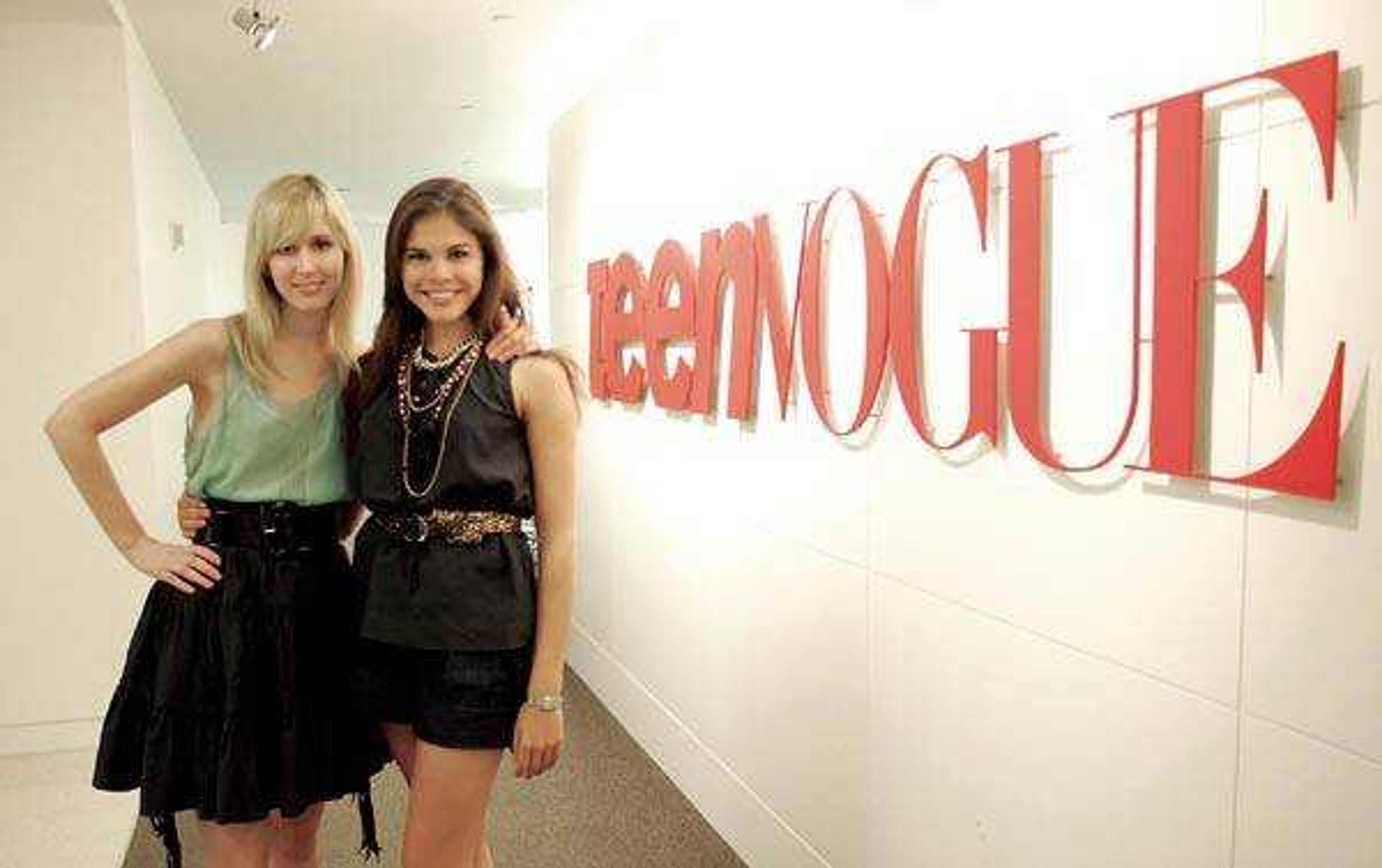Sizing Up: Teens, women's magazines feature females of all shapes, sizes
NEW YORK -- Mixed among the pages of dazzling celebrities and rail-thin models that dominate fashion and teen magazines is a surprising sight: young women with thick thighs and flabby abs. In Seventeen, Teen People, CosmoGirl! and Teen Vogue are bathing suit sections partly illustrated by less-than-perfect figures and tips on maximizing assets and minimizing defects...
NEW YORK -- Mixed among the pages of dazzling celebrities and rail-thin models that dominate fashion and teen magazines is a surprising sight: young women with thick thighs and flabby abs.
In Seventeen, Teen People, CosmoGirl! and Teen Vogue are bathing suit sections partly illustrated by less-than-perfect figures and tips on maximizing assets and minimizing defects.
Editors say they are using more average women and fewer models to reflect changing body types and to help self-conscious teens see that not everyone is perfect.
"It's not going to help my reader if we only show girls who are size 6's," said Atoosa Rubenstein, editor of Seventeen magazine. "Everyone is beautiful, it's just a matter of confidence, and we try to show that."
Teen People recently featured a story about Brittany Harper, a plus-sized 20-year-old who has won several beauty pageants against average-sized girls in North Carolina and currently holds the USA Eastern Miss title. Harper, from Goldsboro, N.C., said she's pleased to see more overweight women in magazines.
"I think maybe seeing someone like me in a magazine makes you realize that you don't have to be skinny to be pretty," she said. "People see skinny girls in magazines and they think that's what normal is when it's not the case."
Harper said she started entering the pageants because she was shy and self-conscious but now she's happy with her body.
In May 2004, Glamour Magazine broke a barrier of sorts by putting the sizable Queen Latifah on the cover. It outsold the May 2003 cover which featured svelte actresses Halle Berry and Rebecca Romijn.
Rubenstein, who joined the magazine two years ago after launching CosmoGirl!, said her priority has been to reflect the population. She said most of the girls in the style and beauty sections are not models, and variety helps illustrate cosmetics for different body and skin types. The magazine shows five skin tones now to reflect different ethnic groups.
"If you were a South Asian girl, you would have thought you didn't exist in this country if you looked at magazines," Rubenstein said. "Indian girls, girls from all over were just being neglected."
Seventeen's casting director chooses girls in malls, on the street, and anywhere she can find them for beauty and fitness sections. The magazine has increased newsstand sales by 17 percent in the past two years.
"It doesn't make good business sense to stay the same," Rubenstein said. "Girls today have so many different role models they wouldn't stand for it if they only saw the same thing every time they looked at Seventeen."
Jane Keltner, fashion news editor at Teen Vogue, said it's inspirational for girls to see how their peers are dressing.
"We try to use all shapes and sizes, but we're especially interested in their sense of personal expression and style," Keltner said.
Teen Vogue picks non-models for snapshot portraits highlighting individual styles, and also showcases cool bedrooms. The back-to-school issues followed girls in Boston and Dallas as they shopped for clothes and school supplies.
Emily Weiss, 20, was chosen to go thrift shopping with the magazine in her hometown of Wilton, Conn. She is thin and pretty, but said she was chosen because of her individual style.
"Women's magazines are fantastical and highly stylized," she said. "For a magazine to incorporate real fashion from real people off the street is important."
Experts are lauding the shift, but say the industry still puts too much pressure on girls to be thin and conventionally beautiful. And there's no question magazines are still putting thin, beautiful celebrities on their covers.
Mary Pipher, author of a book about teen girls and body image, "Reviving Ophelia," says anything that shows realistic women is a step in the right direction to help girls gain self-esteem. She argues in her books that teens are defined and pressured by the need to be beautiful.
"Presenting a broader range of beauty, even if it's under the guise of selling cosmetics, gives girls more permission to think they too are attractive," she said. "The ideal message is you're great just the way you are and you don't have to spend any money, but of course they need to sell magazines."
Jean Kilbourne, creator of the "Killing Us Softly" educational film series shown in schools, has been tracking the influence of media on women for the past 30 years. She says the pressure has never been worse.
"The ideal is more impossible than ever before," she said. "Technology now makes it possible to take a human being and make her flawless by using digital alteration, whittling down her thighs, whatever needs to be done."
Kilbourne said the international obsession with celebrities also adds to the pressure, making girls believe they should be able to look like Jennifer Aniston or Julia Roberts.
"Showing real girls is just great sociologically," she said. "Not only does it make more sense to show how a bathing suit will transform a person's body by using a real body, but it makes women feel like they aren't alone out there, that they are beautiful, too."
Connect with the Southeast Missourian Newsroom:
For corrections to this story or other insights for the editor, click here. To submit a letter to the editor, click here. To learn about the Southeast Missourian’s AI Policy, click here.










